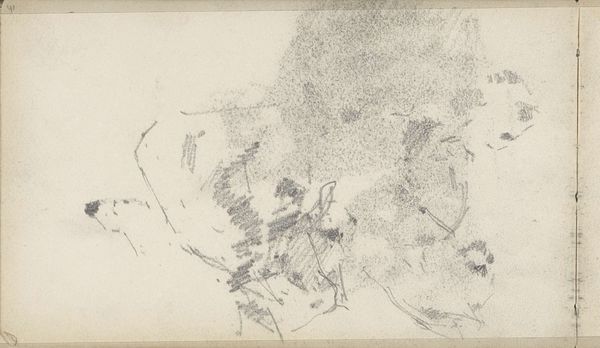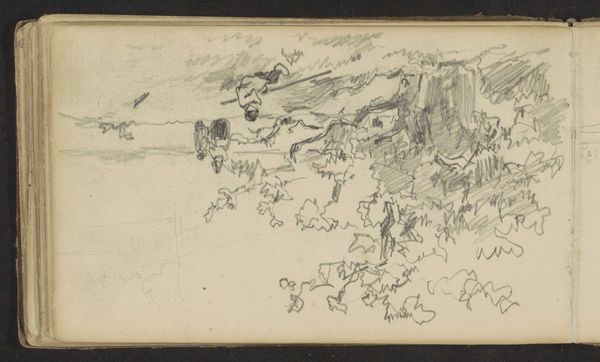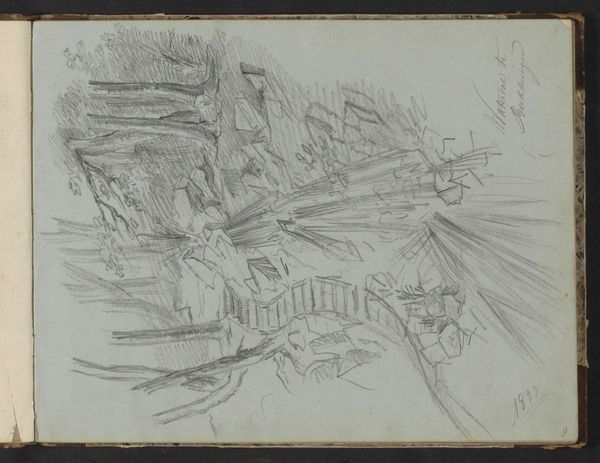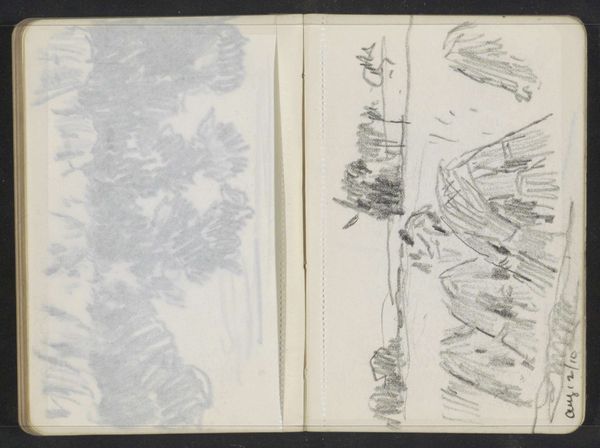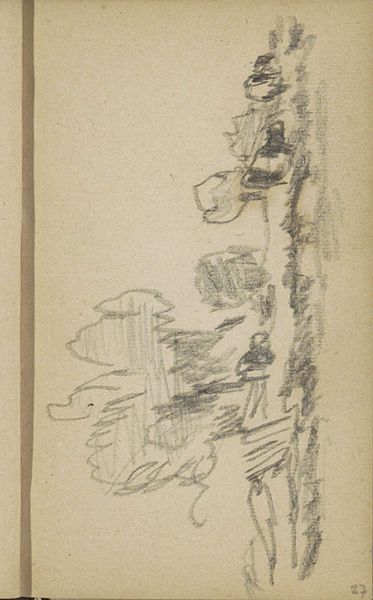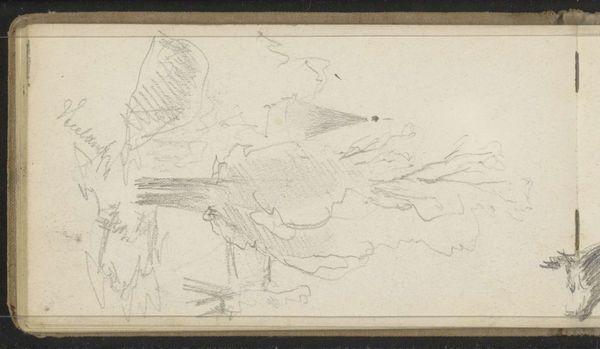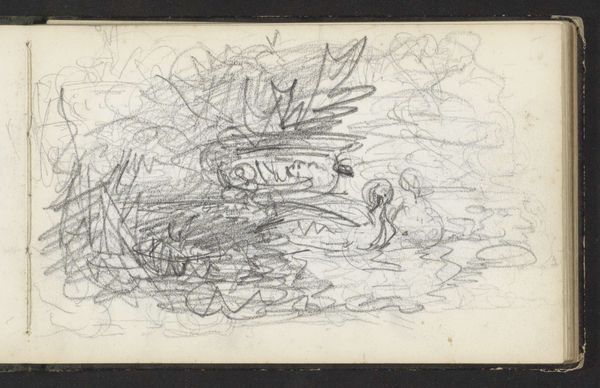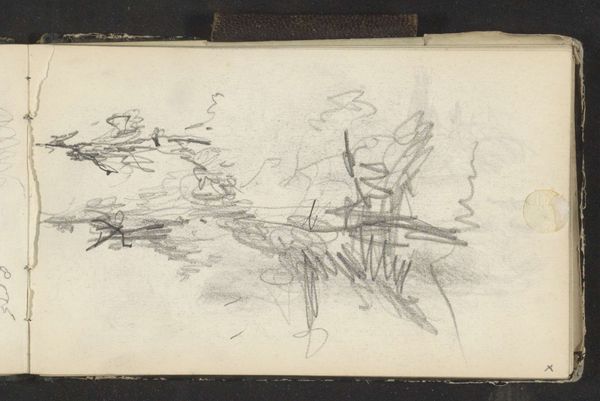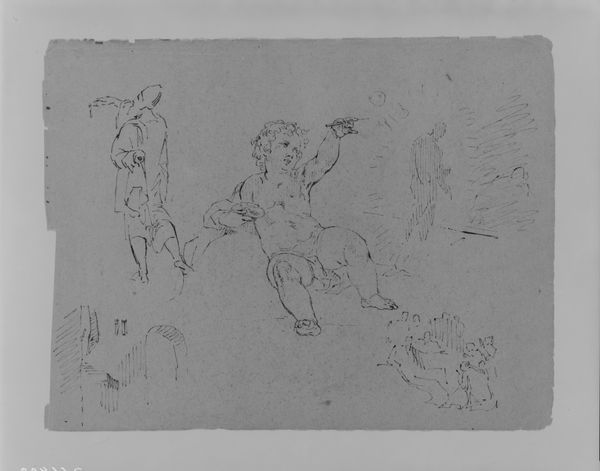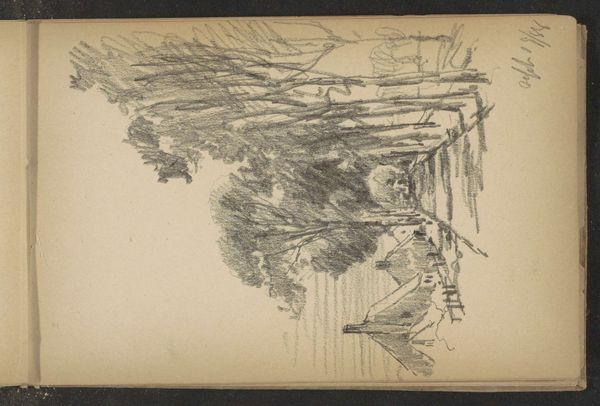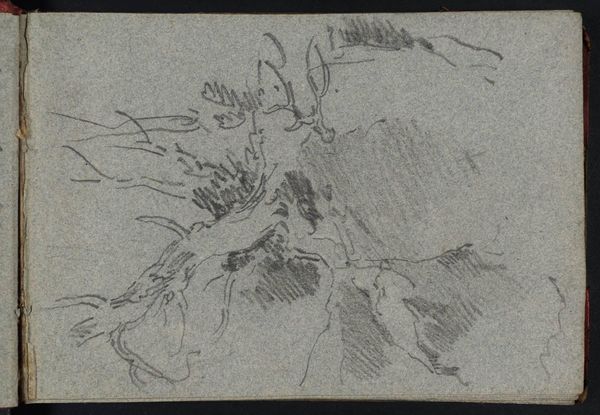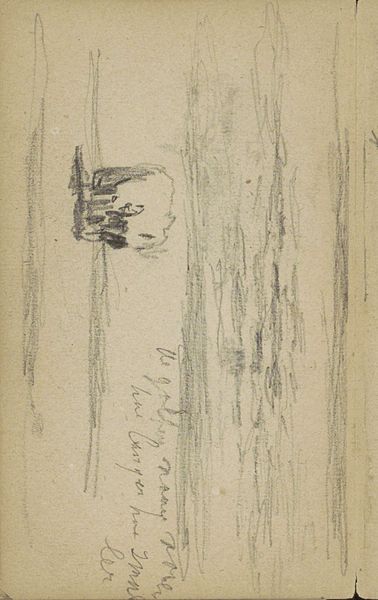![[title not known] by Sir George Howland Beaumont](/_next/image?url=https%3A%2F%2Fd2w8kbdekdi1gv.cloudfront.net%2FeyJidWNrZXQiOiAiYXJ0ZXJhLWltYWdlcy1idWNrZXQiLCAia2V5IjogImFydHdvcmtzLzkyNTk1YjRlLWEzNDUtNDc3OC1hYjlkLTcwZTAwMjJiODc0Ni85MjU5NWI0ZS1hMzQ1LTQ3NzgtYWI5ZC03MGUwMDIyYjg3NDZfZnVsbC5qcGciLCAiZWRpdHMiOiB7InJlc2l6ZSI6IHsid2lkdGgiOiAxOTIwLCAiaGVpZ2h0IjogMTkyMCwgImZpdCI6ICJpbnNpZGUifX19&w=3840&q=75)
Dimensions: support: 125 x 181 mm
Copyright: CC-BY-NC-ND 4.0 DEED, Photo: Tate
Curator: This small sketch comes to us from Sir George Howland Beaumont, dating back to his lifetime between 1753 and 1827. Editor: It has a hazy, almost dreamlike quality, doesn't it? The soft pencil strokes create a sense of gentle movement. Curator: Beaumont was, of course, a central figure in the British art establishment, an influential patron and advocate for landscape painting. This sketch offers a glimpse into his working process, his engagement with the natural world. Editor: And the materials themselves—paper and graphite—speak to a specific context of artistic production. It's a relatively inexpensive and portable medium, suggesting a practice of sketching en plein air. Curator: Exactly. Consider the role that patrons like Beaumont played in shaping artistic tastes and institutions. He directly influenced the development of the National Gallery. Editor: I am also intrigued by the sketch's lack of definite lines; it seems as though Beaumont was trying to capture a certain atmospheric quality or effect of light. Curator: It’s a reminder that art is not created in a vacuum. Beaumont's social position afforded him the resources and influence to shape the art world around him. Editor: Examining the interplay between technique, materials, and social context allows us to appreciate the complexities embedded within this seemingly simple sketch. Curator: It certainly reshapes our understanding of British art history.
